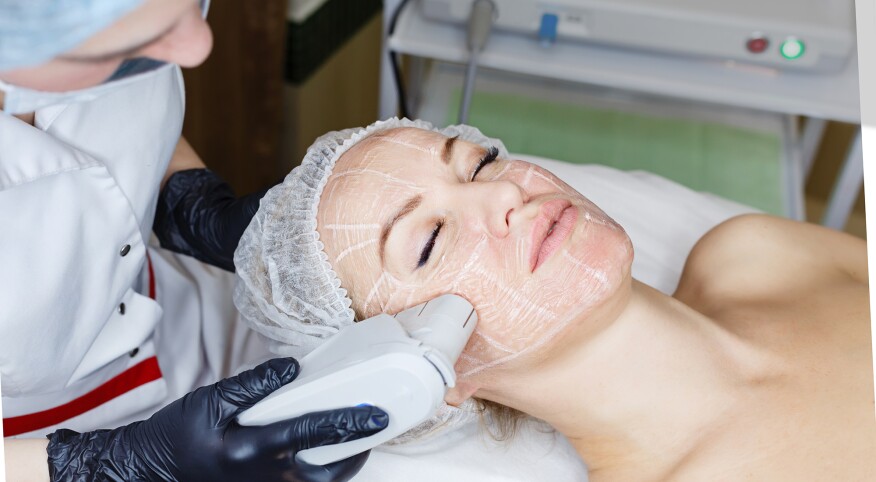As I approached my mid-40s, I noticed what I thought was an unwelcome side effect from getting in shape and losing weight: My face was looking skinny. Some may have said gaunt. I didn’t like how I was looking in photos. I missed having full cheeks and functional eyelids that didn’t simply collapse with every blink as if they were crying out, “We give up! Let us stay closed!”
This unfortunate facial deflation was puzzling to me: I wasn’t working my face out at the gym. I wasn’t extreme dieting. I’d lost weight in the past and my face hadn’t turned into a flat tire with teeth. What was going on?
As it turns out, my unwelcome new look had nothing to do with losing weight. It was just the natural, progressive loss of collagen, the protein that keeps our skin tight and tone. Apparently, we all start gradually losing collagen as early as our late 20s and early 30s, and the most noticeable effect is your skin looking less plump, i.e. Flat Tire Face.
I love looking my age … when I look good. I wear my wrinkles proudly and happily accept compliments. So, when I decided to try Ultherapy, it wasn’t about looking younger, it was just about looking better.
“Ultheray is the gold standard for noninvasive lifting and tightening,” says Meredith Harris, a clinical aesthetician at Russak+ Aesthetic Center. The procedure uses focused ultrasound, which stimulates your body to produce some of the collagen you’ve lost … hopefully making you look less like a deflated balloon and more like the gorgeous, middle-aged woman you are supposed to be. Here’s the lowdown on my quest for collagen.
What they do
After (hopefully) taking a painkiller or using some numbing cream, the doctor or aesthetician will apply ultrasound gel on the treatment area. Then they run a wand over your face, delivering little bursts of sonogram energy beneath the surface of the skin. The procedure can be used on your face and brow, neck, chin and décolletage. It usually lasts about an hour to 90 minutes.
There’s usually no downtime
Your skin might be a little red or swollen immediately after the procedure, but unless you’re planning on posing for extreme close-ups, you can go on with your day. Of course, you might be a little out of it if you’re given a prescription drug before the medication because …
It can hurt like a #$*%
OK, this is just my personal takeaway. I’ve heard braver women brag that it barely hurts. Personally, I was very happy to have been given something to take the edge off. Discomfort can also be eased with topical numbing creams.
It takes a while to kick in
You won’t see instant results, but most patients start to notice a difference in about three months.
It lasts for a long time
Ultherapy is different from injectable, temporary fixes like Botox or fillers. “Patients typically see benefits last for two years,” advises Harris.
The cost
Depending on where you live, treating your full face and neck can cost anywhere from around $2,500 to $5,500. If you treat only select areas, you’ll pay less.

Getty Images








